New rocket, plus moon and Venus missions, herald new beginnings
(Source – The Hindu, International Edition – Page No. – 7)
| Topic: GS3 – Science and Technology |
| Context |
| ● The Indian government has approved various new projects in space exploration, enhancing India’s role in lunar, planetary, and satellite missions.
● These projects include the development of a new rocket, missions to the Moon and Venus, and upcoming satellite launches like NISAR and Proba-3. ● The private sector is also contributing with satellite development and green propulsion technology. |
Here’s a Breakdown of Important ISRO Missions:
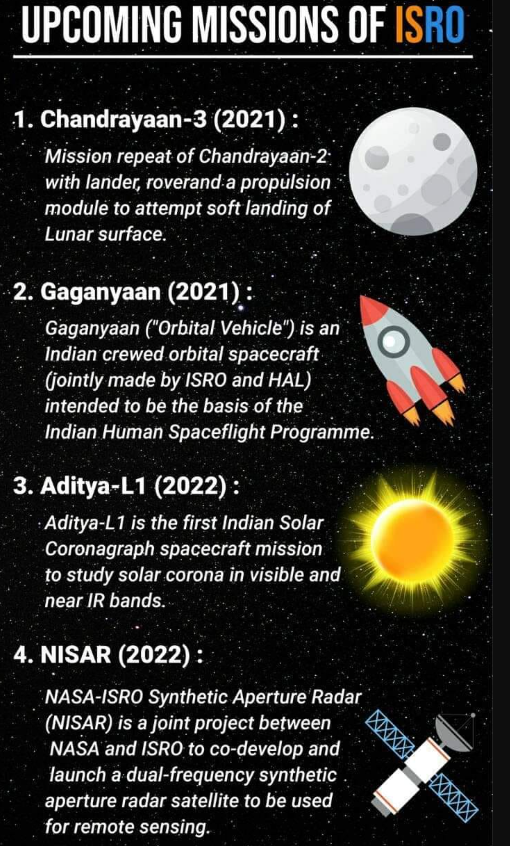
Gaganyaan Human Spaceflight Programme
- Goal: India’s first crewed space mission, aimed at demonstrating human spaceflight capabilities.
- Components: Includes two uncrewed missions and one crewed mission to Low Earth Orbit (LEO).
- Status: The Union Cabinet has approved additional funding for an extra uncrewed flight, bringing the total to four missions.
- Budget: Received ₹11,170 crore in additional funding.
- Timeline: Expected uncrewed missions will occur before the final crewed flight, likely launching by 2025.
Bharatiya Antariksh Station 1 (India’s Space Station)
- Objective: India’s first space station, designed to support research in space science and technology.
- Details: Four missions are planned to test technologies critical for the space station’s establishment.
- Budget: The project received a budget allocation of ₹11,170 crore.
- Timeline: Planned completion by 2028, after successful technology validation and testing.
Next Generation Launch Vehicle (NGLV)
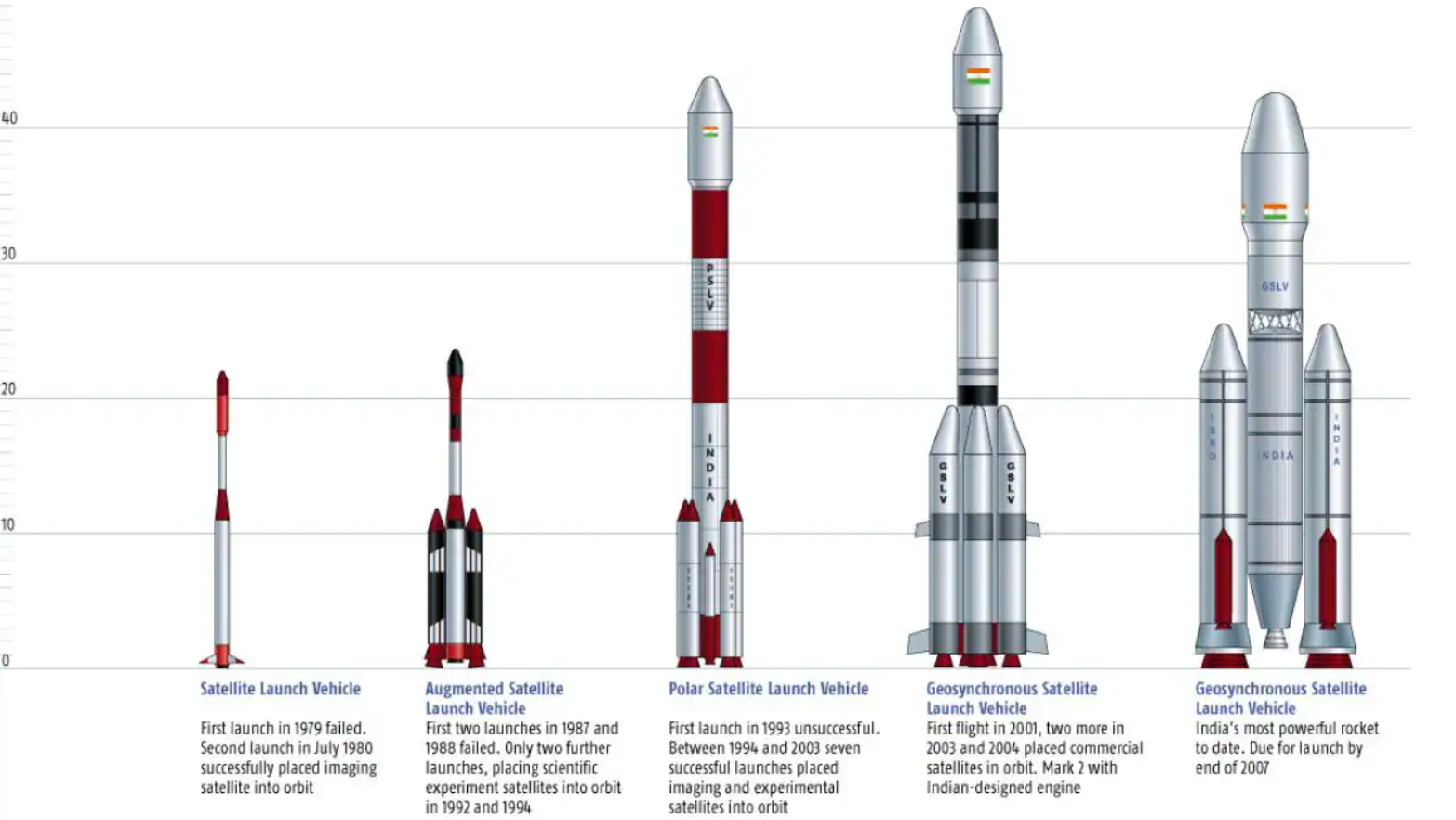
- Purpose: A new rocket to replace the PSLV and GSLV series, supporting diverse missions from low earth orbit to interplanetary.
- Funding: Cabinet approved ₹8,240 crore for its development, including the first three test flights.
- Industry Role: ISRO to partner with private industry for streamlined operations.
- Significance: Aims to enable India’s space autonomy by supporting various mission payloads and requirements.
Polar Satellite Launch Vehicle (PSLV) – Private Sector
- Objective: A PSLV constructed by Hindustan Aeronautics Ltd. and Larsen & Toubro.
- Expected Launch: End of 2024 or early 2025.
- Role: First PSLV fully developed by Indian private sector entities, marking a shift towards industry-driven launch capabilities.
- Significance: Enhances ISRO’s launch frequency and reduces dependence on in-house manufacturing.
Chandrayaan-4 Moon Mission
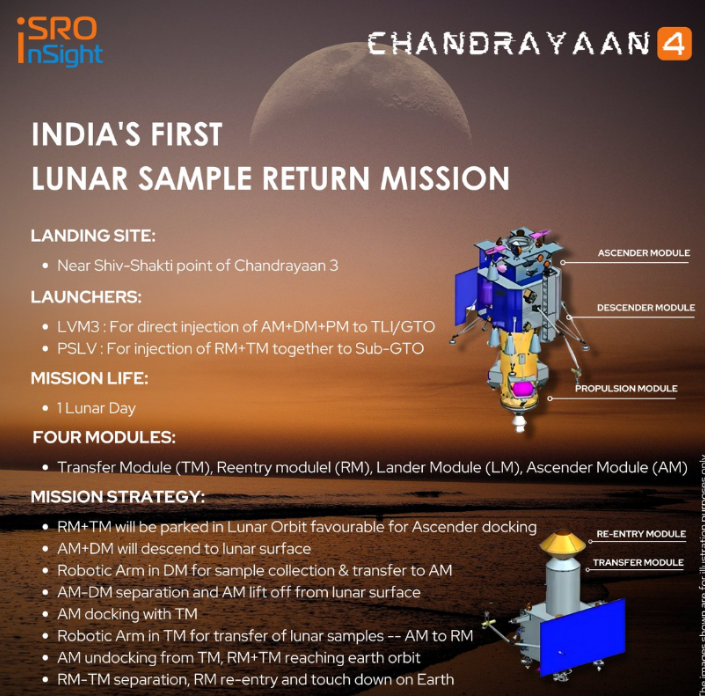
- Mission Type: Sample-return mission targeting lunar surface.
- Launch Vehicle: Components launched separately on LVM-3 rockets, docked in Earth orbit.
- Landing Site: Near Chandrayaan-3’s site to retrieve moon soil and rock samples.
- Budget & Timeline: Estimated cost is ₹2,104 crore; planned launch by 2027.
- Objective: Provides insight into the moon’s surface and subsurface properties through returned samples.
Lunar Polar Exploration Mission (LUPEX) with Japan
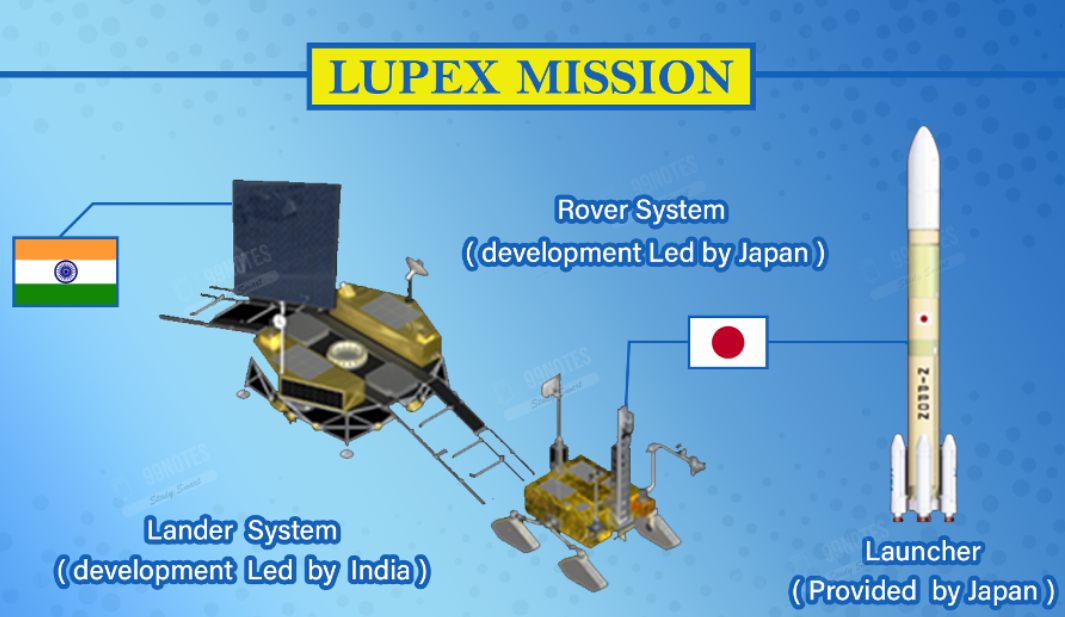
- Goal: A joint mission with Japan focusing on exploring lunar poles.
- ISRO Role: Developing a new lander variant that could support crewed missions in the future.
- Objective: Studies the lunar south pole region, analysing resources for potential human exploration.
- Importance: Advances international collaboration and India’s lunar exploration expertise.
Venus Orbiter Mission
- Objective: Explore Venus’s surface and atmosphere to understand planetary evolution.
- Timeline: Expected to launch in March 2028.
- Budget: Approved at ₹1,236 crore.
- Focus: Investigation into Venus’s greenhouse effect, geological activity, and atmospheric conditions.
Space Based Surveillance (SBS-3)
- Scope: Third phase of space-based surveillance, building on earlier SBS-1 and SBS-2 missions.
- Components: Involves deploying 21 ISRO-built satellites and 31 private sector-built satellites.
- Budget: ₹26,968 crore.
- Purpose: Enhances India’s capability in space-based monitoring, crucial for defence and environmental applications.
NISAR (NASA-ISRO Synthetic Aperture Radar)
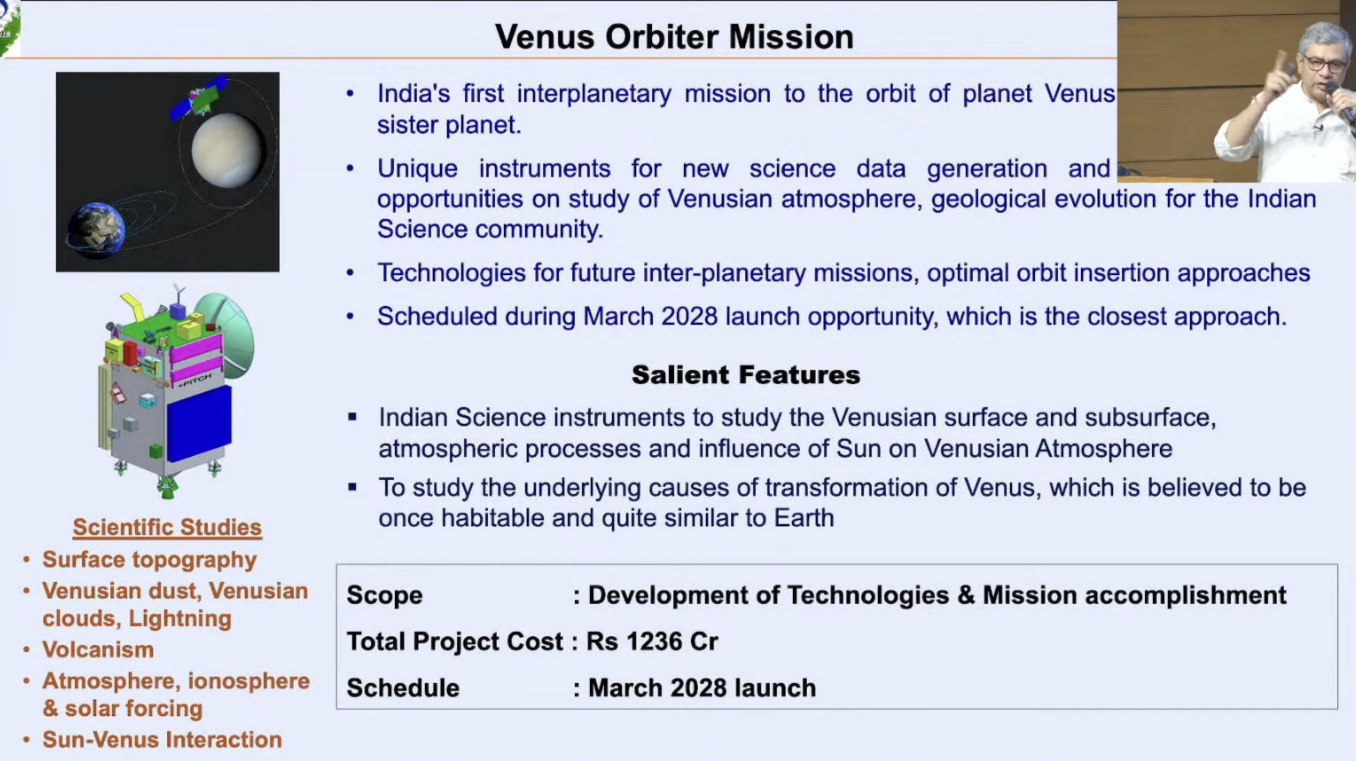
- Purpose: Joint Earth observation mission with NASA to monitor land and ice movements.
- Challenges: Satellite required additional thermal protection after tests revealed high launch temperatures.
- Launch Timeline: Expected in early 2025 via GSLV.
- Significance: One of the most advanced radar satellites, essential for climate and environmental studies.
Proba-3
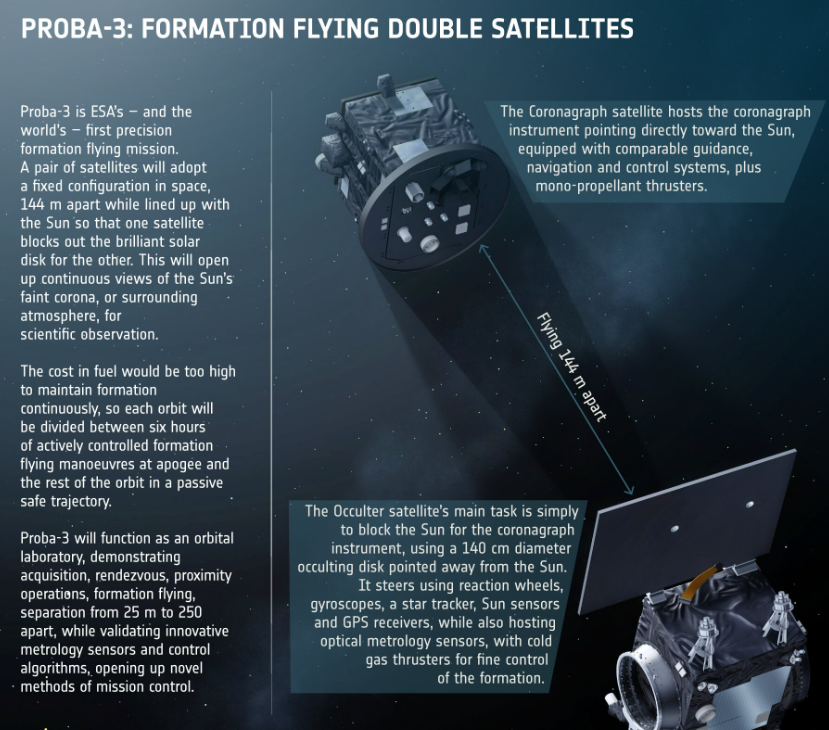
- Objective: European Space Agency mission to study the Sun’s corona.
- Mechanism: Two satellites work in tandem, with one satellite blocking the Sun to simulate an eclipse.
- Launch Timeline: Planned for November 29 on a PSLV-XL.
- Significance: Enhances understanding of solar corona and solar storms, impacting space weather prediction.
Astrosat
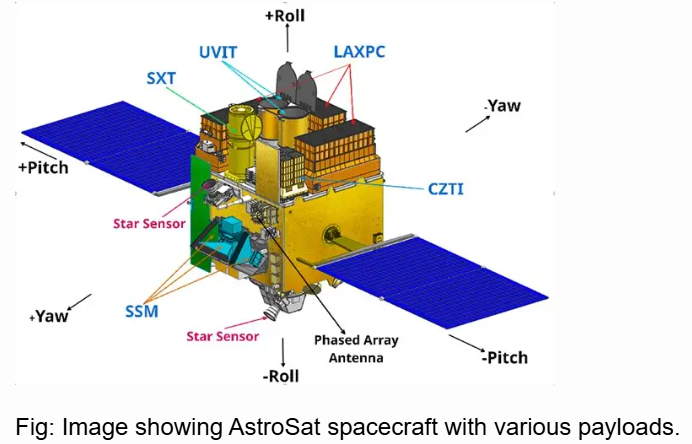
- Description: India’s first multi-wavelength space observatory, launched in 2015.
- Achievements: Provided data for over 400 research papers; outlasted its initial five-year mission life, now in its ninth year.
- Current Status: Expected to operate for another two years based on fuel levels.
- Impact: Contributed significantly to space research in ultraviolet, optical, and X-ray observations.
| PYQ:
Q.1 What is India’s plan to have its own space station and how will it benefit our space programme? (150 words/10m) (UPSC CSE (M) GS-3 2019)
Q.2 Discuss India’s achievements in the field of Space Science and Technology. How has the application of this technology has helped India in its socio-economic development? (200 words/12.5m) (UPSC CSE (M) GS-3 2016)
Q.3 India has achieved remarkable successes in unmanned space missions including the Chandrayaan and Mars Orbiter Mission, but has not ventured into manned space missions, both in terms of technology and logistics? Explain critically. (150 words/10m) (UPSC CSE (M) GS-3 2017) |
| Practice Question: Evaluate the impact of India’s recent space exploration initiatives, such as the Chandrayaan-4 mission and the Bharatiya Antariksh Station. How these missions affect India’s global standing in space technology and international collaboration. (250 Words /15 marks) |
